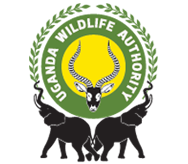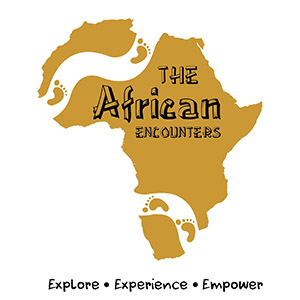DR Congo Tours
Before the tourist enters the Democratic Republic of Congo, they already have at least some information about it. For some, it’s from the articles and movies they viewed about the country’s mineral wealth and composition. While that turns out to be true, the Democratic Republic of Congo is often misrepresented when it comes to its physical and geographical endowment. The Democratic Republic of Congo is located in central Africa.
In terms of size, it is the second biggest country on the African continent. On the global scale the Democratic Republic of Congo sits at number 11 among the biggest countries. The Democratic Republic of Congo, formerly known as Zaire, has numerous neighboring countries probably due to its large size. Among these are the Republic of Burundi, Angola, Republic of Uganda, the Central African Republic, Republic of Tanzania, Rwanda, Republic of Zambia, the recently-formed South Sudan, and Congo Brazzaville.
The country has a population of about 110 million citizens, and is one of the moderately growing populations in Central and Eastern Africa. It is also classified as one of the few francophone countries on the African continent which makes French one of the most spoken languages in major cities.
The country’s capital city is known as Kinshasa. It is one of Africa’s largest cities and is arguably the 3’rd largest city in the metropolitan area. The country’s official currency is known as the Congolese franc. Congo has many languages but due to its colonial history and attachments, French is the country’s official language. The other widely indigenous spoken languages such as Swahili and Lingala. There is a number of other local languages spoken by other smaller tribal groupings in the country like Kikongo and Tshiluba. The Democratic Republic of Congo has a rich religious composition. Christianity, just like in many other Central and East African countries, has the biggest dominion share of followers. Christianity spans over 96% of the religious population, where is Islam, the African traditional society, and other smaller faiths account for the remaining 4%. Speaking of ethnicity, the country has a rich history that back dates from centuries ago.
There had been a few Bushmen not until the Bantu expansion movements from Western Africa. Presently, the Bantu ethnicity is the largest ethnic group in in the Democratic Republic of the Congo with tribes such as (but not limited to) Kongo, the Azande, the Mangbetu, the Luba, and the Mongo. With this brief introduction, a prospective tourist should expect to have a great historical perspective tour on the culture while in the Democratic Republic of the Congo.
The Democratic Republic of Congo, just like its neighbors Uganda and Rwanda, is located in the Virunga region. Majority of the country’s Topography is covered by tropical rainforest cover. Additionally, this is because it is located along the Equator. The country receives large amounts of rainfall and in tropical Africa, its rain amount above the average. The rainforest cover has tens of tree species that grow to cloud-length shielding off the ground from receiving sunlight.
Country’s rainforests have some endemic trees such as the popular Okoume tree. These tree species have for hundreds of years been homes to vulnerable and endangered mountain gorillas whose location is only in Central and a few parts of Eastern Africa. These mountain gorillas are protected in conservation areas most of which have been designated as national game reserves and national game parks.
Kahuzi - Biega National Park, Congo
This National Park is located in the eastern part of D.R. Congo. Its great feature is that it has the composition of lowland mountain gorillas that can be located only in a few places globally. The expanse extends the Mt. Mitumba Highlands and is sealed off by the World Gorilla Heritage Center to be a reserve area for these endangered species. Montane vegetation is the most dominant in this national park and has a large stock of bamboos on which these mountain gorillas feed. Getting into this National Park costs about $400 and is divided into two sections. The tourists who decide to visit the Virunga sector are advised to use a ferry which takes off from the town of Goma. The journey can take about an average of 5 hours on ferry, and three hours for those who choose to use the speed boats. Due to the rough Terrain in the Congo rainforest it is advisable for the prospective tourist to use a travel agency since most of them use 4×4 vehicles which speed up the journey to the National Park.
Maiko National Park
This National Park is similarly located on the sidelines of the Democratic Republic of Congo in the Eastern region and houses the lowland mountain gorillas just like its counterpart Kahuzi Biega National Park. It’s a rich area and numerous gorillas can be seen in arguably all directions of the National Park.
Virunga National Park
This National Park is located in Eastern Congo. Formally, the national park was known as Albert national park for its location within Lake Albert rift valley basin, it is the oldest National Park in the Democratic Republic of Congo and Africa. This National Park neighbors Uganda’s Queen Elizabeth National Park and Mount Rwenzori game reserve.
The National Park is known for the highland mountain gorillas and also other similar primates such as the golden monkeys, and the chimpanzees. An ordinary trip for gorilla trekking in this National Park costs about $400 for each individual but also comes with other packages depending on the season.
Lastly is the Odzala National Park Congo, whose most features are similar to the Virunga National Park.
Things to do in D.R. Congo
While in any of these national parks a tourist should expect to engage in mountain gorilla trekking, mountain gorilla habituation, Mountain hiking, monkey and a chimpanzee trekking, bird watching, nature and the Botanical walks, among other similar activities.
What to pack?
Goggles, raincoat and rain jacket, a pair of binoculars, insect repellent, water bottle and snacks, a power bank, camera, strong and steady backpack, hiking gloves, among many other required items as the tour operator may advise you.







